In one of my earlier posts on Lahore’s old books shops, Adil Najam raised an interesting point and suggested that Pakistan is ripe for an Amazon.com type service for selling and buying old books and young Pakistani entrepreneurs should think about it. I don’t know if anyone has started such book selling service in Pakistan but I did come across this wonderful online store, Al Rug , selling handmade carpets. Two young entrepreneurs from Islamabad, one of them is an old friend of mine Yasir Hussain, came up with the idea of marketing and selling Pakistani handmade carpets to Europe and Americas through an online store.
At that time, not many people believed that Europeans and Americans would buy such an expensive product from a Pakistani online store. But hard work and honesty does pay off and, now, its amazing to see the huge success of this unique online store after three years. Definitely a wonderful example to follow. Many of you probably know that the handmade carpets of Pakistan, and particularly of Lahore, are one of our major export items and earning us huge revenues each year.
The gifted artists of Pakistan have the ability to produce ANY kind of carpet. Pakistan is fortunate enough to be blessed with such highly skilled artists, the main requirement for this industry, so the demand remains all time high. The Government of Pakistan is also encouraging this industry through various means. I know that SMEDA and some of the banks are offering easy loans and technical assistance to craftsmen/women for the purpose of setting up their own businesses. For ATP readers interest and information, let me share some background information, present situation and the challenges, including child labor, facing Pakistan’s handmade carpet industry.
Introduction
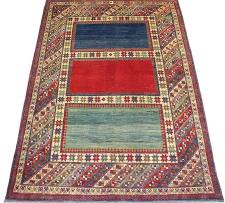 Pakistan is amongst the world’s largest producers and exporters of hand-knotted Oriental carpets. In the last few decades, Pakistani carpets have reached the farthest corners of the world.
Pakistan is amongst the world’s largest producers and exporters of hand-knotted Oriental carpets. In the last few decades, Pakistani carpets have reached the farthest corners of the world.
Contrary to widespread belief, the art of weaving developed in the region, comprising Pakistan, at a time when few civilizations knew about it. Excavations at Moenjodaro and Harappa – ancient cities of Indus Valley civilization – have established that the people knew the use of spindles and spun a wide variety of weaving materials. In fact, some historians are of the view that it was the Indus Valley civilization that of the first time developed the use of woven textiles.
The tradition of textile weaving has survived in the shape of folk culture in various parts of Pakistan. The textile designs, architecture and characteristic of our folk culture point to the floral and geometric patterns that are basic to carpet designing. This clearly shows that the art of carpet-making and designing existed in the region from very old times.
Islamic Heritage
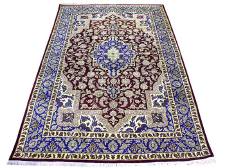
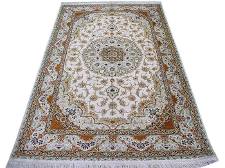
Carpets have, from the beginning, been a part of the Islamic culture as it achieved unprecedented heights in Baghdad, Damascus, Cordoba, Delhi and in the fabled cities of Central Asia. They were predominantly used to cover the floors of mosques and houses, and were occasionally used as wall decorations. The first half of the 16th century is considered the ‘Golden Age’ of Persian carpets, when large carpets with rich colors and complex designs were produced out of factories in Iran. As a result, carpet weaving in Orient was perfected to fine art in Persian and Turkish regions and their were the first to be recognized as Islamic carpets.
Mughal Tradition
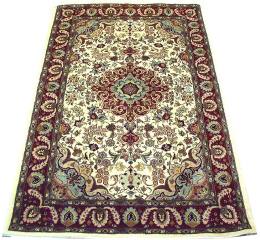 The recent carpet weaving history of Pakistan goes as far back as the inception of Mughal Dynasty, when the last successor of Timur, Babar, extended his rule from Kabul to India, to found the Mughal Empire in the early 16th century. However, many historians believe that carpet making was first introduced to the region in the 11th Century with first Muslim conquerors, the Ghaznavids and the Ghauris from the West. Established Carpet weaving in Indo-Pak Sub-Continent started under the patronage of the Mughals, when Indian craftsmen adopted Persian techniques and designs. The carpets woven in Punjab at that time – often called Lahore carpets – made use of the motifs and the decorative style found in Mughal architecture.
The recent carpet weaving history of Pakistan goes as far back as the inception of Mughal Dynasty, when the last successor of Timur, Babar, extended his rule from Kabul to India, to found the Mughal Empire in the early 16th century. However, many historians believe that carpet making was first introduced to the region in the 11th Century with first Muslim conquerors, the Ghaznavids and the Ghauris from the West. Established Carpet weaving in Indo-Pak Sub-Continent started under the patronage of the Mughals, when Indian craftsmen adopted Persian techniques and designs. The carpets woven in Punjab at that time – often called Lahore carpets – made use of the motifs and the decorative style found in Mughal architecture.
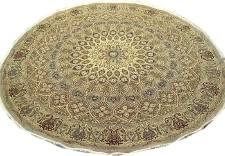
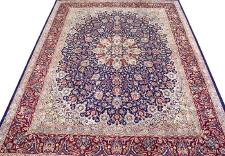
During the Mughal period the carpets made in the Indo-Pak Sub-Continent became so famous that there was a mounting demand for them abroad. These carpets had a distinctive design and boasted a rich knotting density. The carpets made for the Mughal emperors, including Jahangir and Shah Jahan, were of the finest quality. It was during Shah Jahan’s reign that Mughal carpet weaving took on a new aesthetic and entered its classical phase.
Economic Factor
Handmade carpet/rugs often labeled as ‘exotic’, like those vintage rugs, are a highly decorative and luxurious form of ornaments. The handmade carpets produced in Pakistan are mainly for the purposes of export to Western economies, and one of the major earners of foreign exchange amounting up to 300 million dollars annually (3.4% share in total exports in 2002). Due to the high-price factor, the local consumption of the handmade carpets is almost non-existent.
As every knot is tied by hand, carpet manufacturing calls for patience as it may take many months (sometimes years depending on the size and quality of the carpet/rug) before a carpet is completed and may return the investment. Costs, time and HR factor combined makes it less preferred business in modern days. In addition, the risk factor that a carpet may sell after many years of completion makes it even riskier for itchy businessmen of today’s fast-paced marketplace.
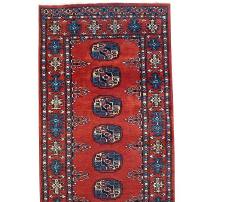
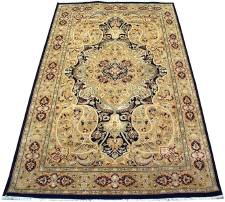
The decline in Pakistan’s textile exports and the fact that they are fetching lower prices than other competitor countries of the region, has affected carpet industry too. Foreign customer is not ready to up the prices due to overall economic slump, and locally the price-hike has made it impossible to produce carpets at the desired prices. All these elements, and a monopoly of bigger players has resulted in many small traders exiting the industry decreasing the overall capacity to almost 60-70%.
Socio-economic Factor
According to 2003 estimates, carpet manufacturing provides jobs for 1.5 million people in the country, majority of which is in poor rural areas. The reason why carpet weaving has been a major source of living for these people is that it does not require resource beyond basic infrastructural facilities to weave carpets i.e. a loom, wool and basic weaving tools. It has become a cottage industry where carpets are weaved in homes, often employing womenfolk in rural areas. It requires a few weeks training to learn to weave a carpet but it would take many years expertise to master the skill. As most of the setups are installed in homes, womenfolk and children also contribute to the work. Due to financial reasons, these folk have little source of earning beside minimal agriculture. These carpets are then transported to major cities like Lahore, Multan, Karachi and Peshawar for selling.

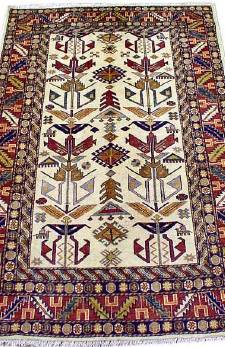
A weaver is considered at the bottom of this food-chain and is least benefited from this sport. Inhuman conditions and lowly paid work-hours makes the life harder for them, and they are physically considered ‘finished’ after 15~20 years of weaving carpets. They are another victim of overall lack of importance given by the Government to the micro-level employees, while the exporters fetch hefty profits for their investments.
Child Labor and other Challenges of Today
In the face of today’s challenges, there was a dire need to re-model the whole business strategy behind carpets to keep this ages old tradition alive in Pakistan. With the advent of technologies, reaching out to end-customer was not feat at all and could be achieved without bigger investment, given a solid marketing strategy. Al Rug, though not first one to use B2C model rather than relying on B2B, has been an example. Their vision is to give home users all around the world a ready access to its inventory and the facility to shop online. Customers are offered a wide range of oriental carpets/rugs to choose from different regions, make, colors and styles, and once an online payment is made, carpet is delivered to their doorstep – almost anywhere in the world – in just three days. I personally think their prices are reasonably OK as they are 300-400% lower than those found in US/European market for an equivalent quality handmade oriental rug. I know their target market is mainly USA and Europe but still, not every Pakistani can afford to buy what they are offering :). Perhaps, introduction of more products with a bit more affordable rates for local market would not be a bad idea at all.
 Another important challenge facing this industry is the child labor issue (also see here). It is widely believed that soft hands of children produce the best ever handmade carpets and rugs. Children of age 7-12 have been and still, to some extent, being used by this industry to produce carpets and rugs.
Another important challenge facing this industry is the child labor issue (also see here). It is widely believed that soft hands of children produce the best ever handmade carpets and rugs. Children of age 7-12 have been and still, to some extent, being used by this industry to produce carpets and rugs.
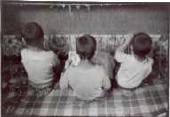 Due to the awareness and pressure put by international organizations and local human rights activists, the Government of Pakistan has taken a number of steps and the situation has improved significantly. Many Pakistani exporters are being extra careful and they do not deal with local manufacturers who employ children to produce carpets. A lot still needs to be done to free this industry completely from child labor.
Due to the awareness and pressure put by international organizations and local human rights activists, the Government of Pakistan has taken a number of steps and the situation has improved significantly. Many Pakistani exporters are being extra careful and they do not deal with local manufacturers who employ children to produce carpets. A lot still needs to be done to free this industry completely from child labor.
But coming back to the bright side of topic, it is only possible with a vision and clinical execution that we can make the world turn to the art produced in our country and ages old traditional crafts. What two young entrepreneurs from Islamabad have done can be replicated all over the country. Any future entrepreneurs listening?
Note: Click on the image for enlarged view

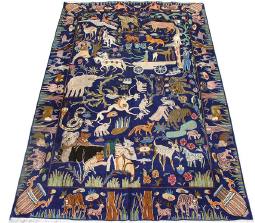
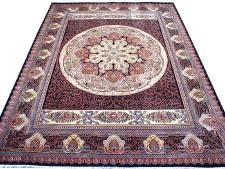
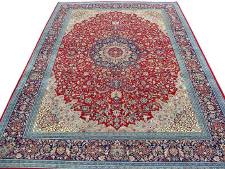




















































@Iram
We try out to best to present the carpet naturally in natural light with profesionnal cameras. We have a complete team of professional photographers and photo-editor who do this job for us. Once a carpet is bought, we also provide one week money back guarantee to the customer, if she doesn’t like it, she can send it back. And we take both sides shipping on us. Easy is that.
@Bilal
That’s sad that the people who produce such art are always kept in the background. Perhaps, that’s a business tactic that people don’t go to them directly. But there are many sellers who keep their artisans on the forefront to create an aura around what they’re selling. I guess the idea works.
@Ayesha
Yes Ayesha, cildlabor has been the biggest menace in this industry. Though it’s still there in pockets, but much of it has been wiped out for years efforts. The reason why children are employed in carpet industry is, they have small fingers which tie smaller perfect knots, and usually tie more knots than an older person. Their wages are also lower than the normal weaver.
Many online sellers do not buy from manufacturers who employe children. Government in itself a bit active in this regards. What hurts most is all those children welfare institutes like SOS munch their charity peanuts and don’t actually do anything beside teaching 100 kids.
@Darwaish
Wages are given on the amount of work done. A weaver normally takes home 100~350 rupess per day depending on his skill. But yes, many take less.
Ayesha,
I think it is commendable that you feel a sense of concern as a consumer regarding the child labor problem; I know I would feel the same.
There is at least one way to ensure that the carpet you buy was not made using child labor: make sure that it is certified by RugMark as child-labor-free and that it carries a unique identification number and RugMark label on the back. Here in the United States, we are working to ensure that importers, retailers, designers and buyers in general are aware of the child labor problem and that they demand that their carpets are certified by the RugMark program.
For more information on RugMark, you can check out the website online at rugmark.org, or visit the RugMark Pakistan website.
I hope that helps!
Biko
hehe MQ … your comment brought a smile on my face too ;0).
Bilal, your point is very valid and instead of commenting myself I will ask one of the owners of the online store to explain a bit more about it.
But there are few points that I would like to raise here like the wages that these gifted artists actually get for each carpet they make. I will be hugely surprised if they get more than a few hundreds rupees, on average, for a single carpet. I also think, without going into right or wrong debate, that no online store or a business would risk the direct communication between clients and the artists. Who would want the artists to find out the real value of their work and customers, the real price of the product they buying. It is in the best interest of the business to keep artists unknown. You know what I mean? ;o)
As much as I love the work of gifted artists, I also think that child labor is a serious issue here. Personall, I don\’t want to buy something made by little kids and we all know that children are still working in this industry. Its just criminal and makes you feel guilty.
How to make sure that you are not buying something made by children? Particularly if you are buying online, you can never guess.
I do not agree with Bilal on feel and touch thing before buying, particulalrly when you are buying something which is not produced in the country you live in. What I look for is the reliability of the website and how well the present their collection. my 2 cents
MQ saheb. your comment made me laugh :)